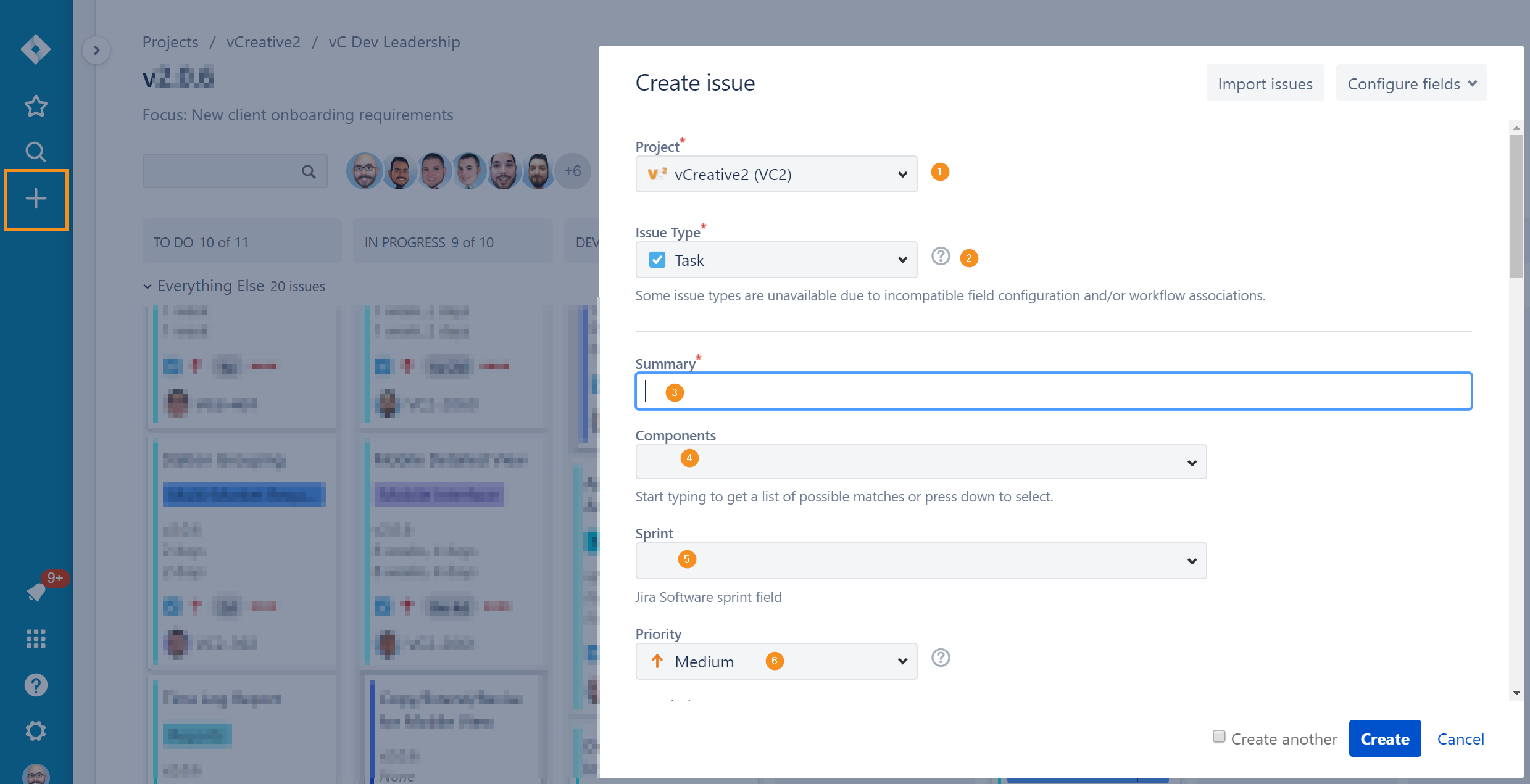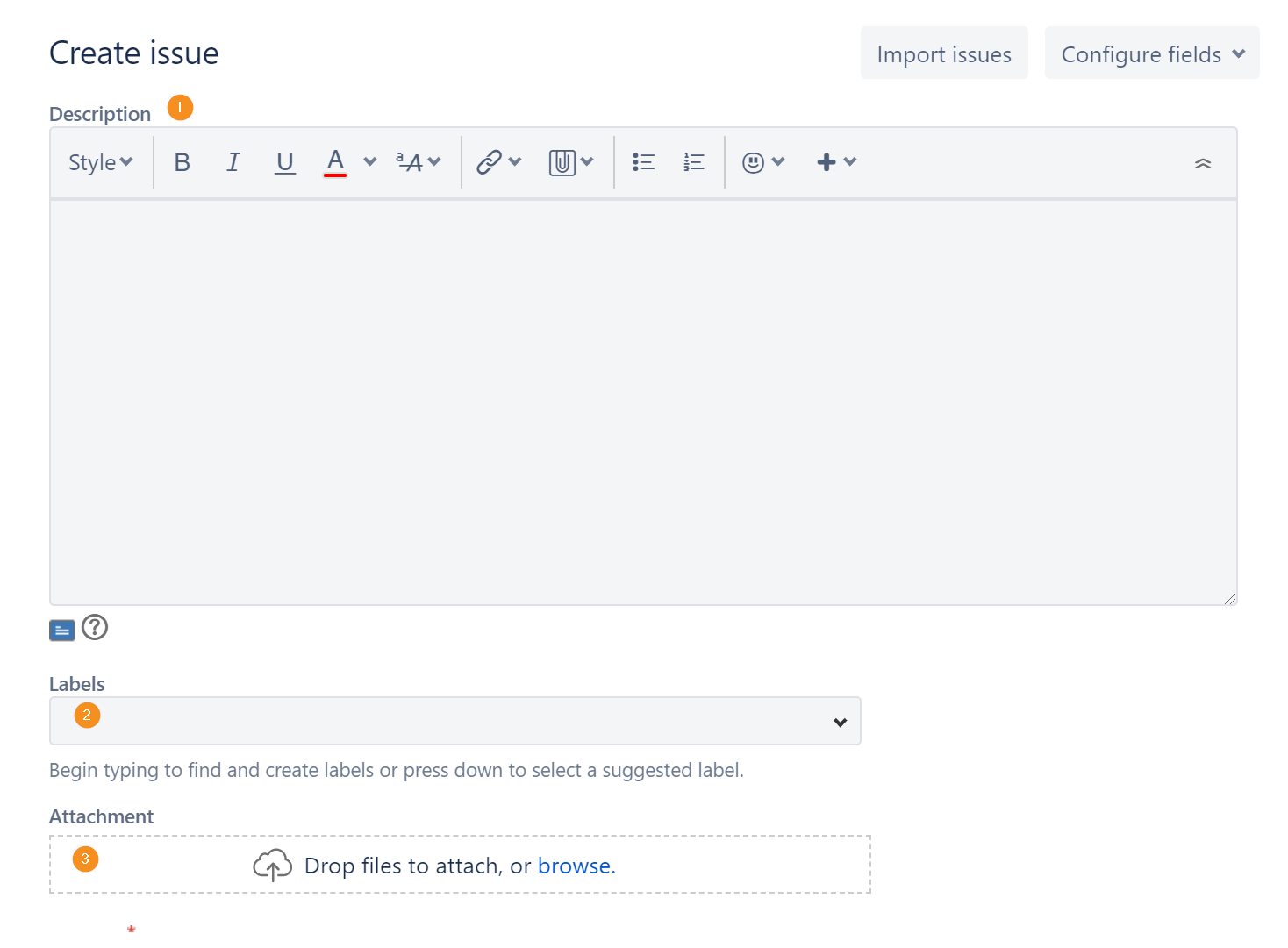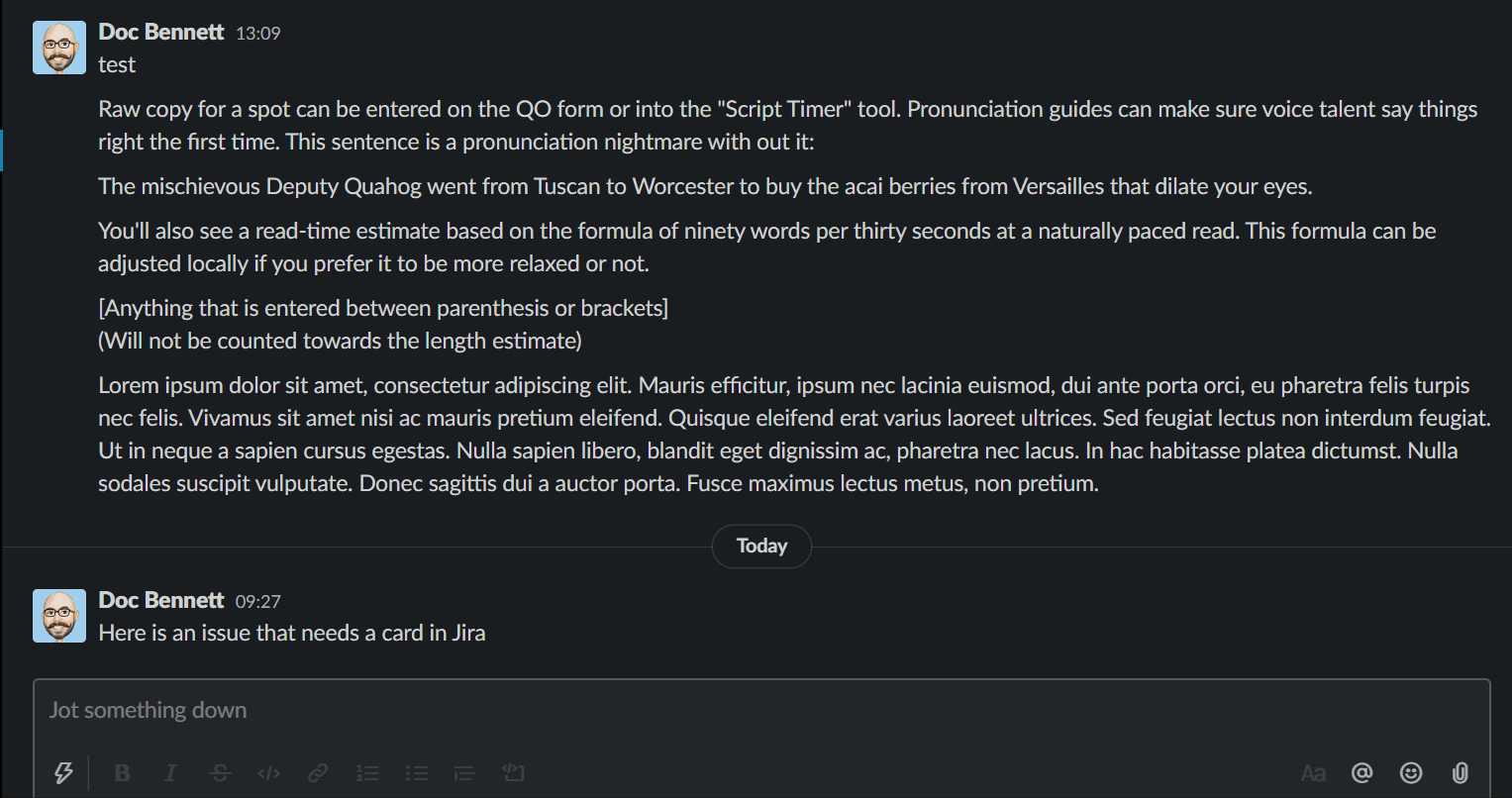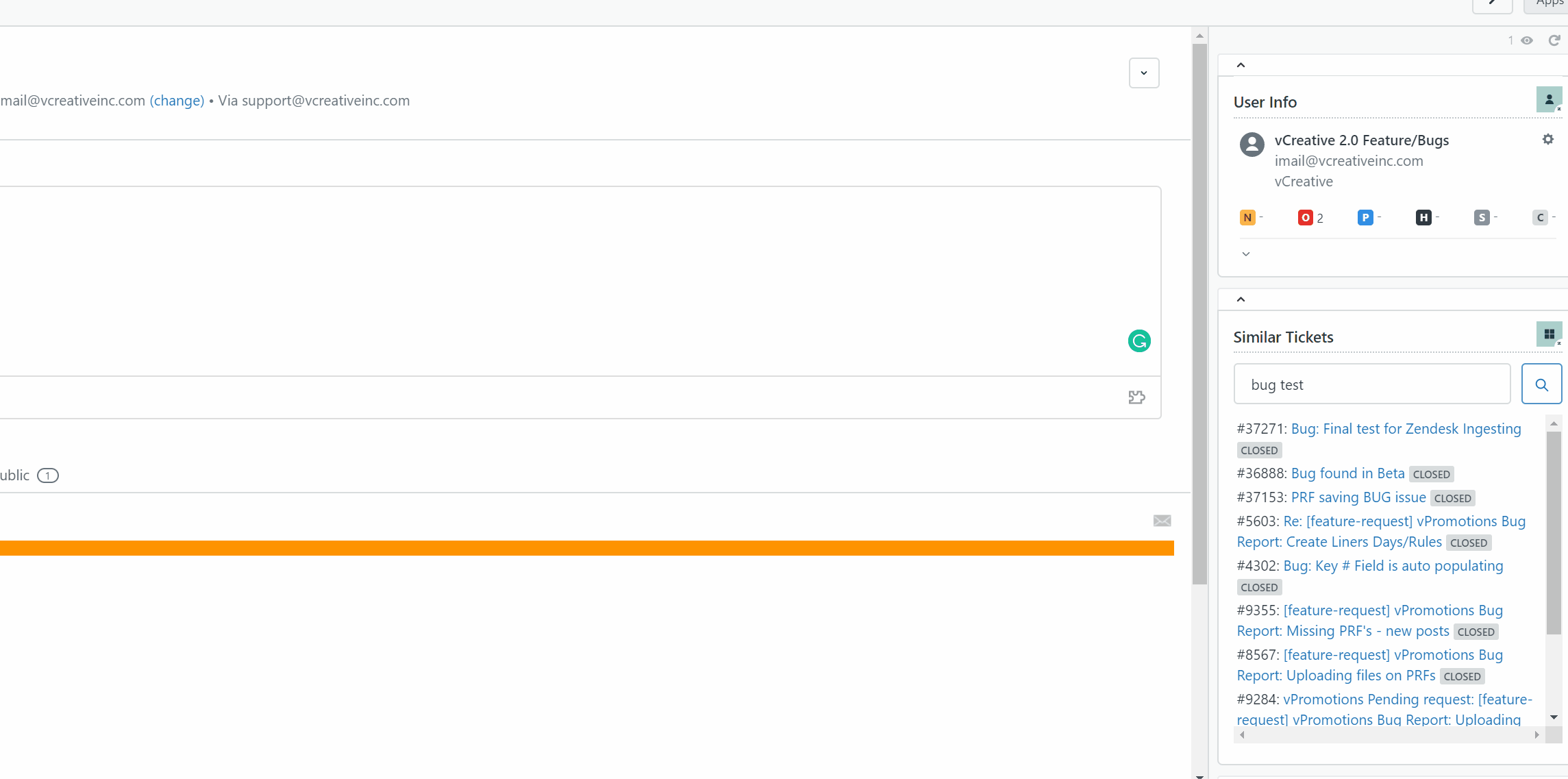JIRA Card Creation
Creating a card in Jira is very simple, you just need to follow some basic guidelines to make sure our development team has what they need to start working. This article will be updated as we fine-tune the workflow inside of Jira as well as the integrations with Zendesk and Slack.
If you are not on a product team and often creating Jira cards already, you are most likely going to be asked to create a card during Smoke Testing. We will first cover the most direct method of creating cards, inside of the Jira interface, as other integrations options will often still require you to revisit the card in Jira to verify/finalize fields.
JIRA
If you have any Project/Board open in Jira you should see a very obvious "+" button in the left navigation, that will open the "Create issue" window.
Figure 1
- The Project is basically the Product. Be sure you double-check this every time, especially when creating a "vCreative2" card from the "QA TESTING" board.
- 99% of what you'll find during smoke tests will be entered as a Bug under "Issue Type", otherwise a Task is the best option if it isn't something that isn't working as it should.
- The "Summary" is simply the short but descriptive title. No more than 5 words if you can, grouping with a suffix like "QO Form: Bad Alignment" or "User Settings: Changes not saving" helps keep each in scope.
- Components deal with the parts of the project. Again, most everything you find during smoke tests will be using the same "vSuite Platform" component.
- Doc, Dev Leads or another Product Manager will let you know the Sprint.
- Medium is the default priority, but if your awareness of the issue suggests it is more/less important you can elevate to a higher option
FIGURE 1:
Figure 2:
- The Description should use the pre-approved formatting which is available with the Support Helper App if you simply type "jcf", and it will output the formatting sections you see below. "ISSUE" spells out what is wrong, "FIX NEEDED" what is should do and "REPRODUCE" is the best place to put a video. Screenshots are nice but a properly recorded video will often tell Development so much more.
h2. ISSUE
*
----
h2. FIX NEEDED#
----
h2. REPRODUCE#
----
h2. DEV SOLUTION/NOTES*
----
h2. USER REPORT----
h2. TESTING
[TESTING URL|]
#
2. Labels should always be used, four or five if possible, that relates to the where and what of the issue. Please try to only use the suggested labels as creating a ton of new ones can complicate reporting.
3. Attachments will automatically show uploaded images/videos if you have inserted them in the description using the attach/paperclip icon in the formatting bar. You can also upload them directly here if needed.
FIGURE 2:
Slack
Inside of Slack, every message has the "kabob" menu (three verticle dots) that gives you more options including "Create issue from" for Jira Cloud. Selecting this lets you put the BASICS of the card in right in Jira.

NOTE: You will still need to open it up on the website to complete it with all fields discussed above.
Zendesk
If you have a Zendesk ticket that would inform or otherwise benefit from being linked to the Jira card, you can do that through an Apps integration on the right side of the Ticket editing screen.
You will have to scroll ALL the way down but you can create new or link to an existing ticket here. Just as with Slack, it is a quick way to start but full details may best be applied to the Jira card inside Jira.

